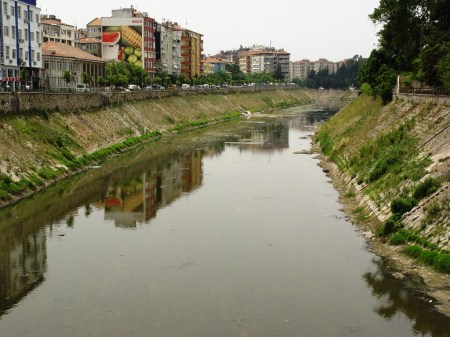In our post yesterday we mentioned that Antioch of Syria was located on the Orontes River.
The Holman Illustrated Bible Dictionary has this information:
Principal river of Syria which originates east of the Lebanon ridge (modern Asi [Turkish], Nahr el-’Asi [Arabic]), rises near Heliopolis (Bealbek) in the Beka Valley of Lebanon, and flows north some 250 miles through Syria and Turkey before turning southwest into the Mediterranean south of Antioch-on-the-Orontes (Antakya) to reach the coast just south of ancient Seleucia, the seaport of Antioch. This river is never actually mentioned in the Bible but was famous for its association with Antioch, which owed to the river the fertility of its district. Cities of the Orontes Valley include Antioch (Acts 11:19; 13:1), Hamath (2 Sam. 8:9; 2 Kings 17:24; 2 Chron. 8:4; Isa. 11:11), Qarqar, where King Ahab of Israel joined a coalition of Syrian kings warring against Shalmaneser III, and Riblah (2 Kings 23:33; 25:6, 21). Nahr el-’Asi (rebellious river) is the modern name of the Orontes (p.1231).
Bruce Metzer wrote:
Antioch was founded about 300 B.C. by Seleucus I. Nicator who named it either after his father or his son, both of whom bore the name Antiochus. It was situated about three hundred miles north of Jerusalem where the chain of Lebanon, running northward, and the chain of Taurus, running southward, are brought to an abrupt meeting. Here the Orontes breaks through the mountains, and Antioch was placed at a bend of the river, about twenty miles from the Mediterranean on the west. In the immediate neighborhood was Daphne, the celebrated sanctuary of Apollo (see II Maccabees 4:33), whence the city was sometimes called “Antioch-by-Daphne” to distinguish it from the fifteen other Asiatic cities built by Seleucus and named Antioch. Advantageously located for trade, being easily approached by caravans from the East and through its seaport, Seleucia, having maritime communications with the West, it grew under successive Seleucid kings until it became a city of great extent and of remarkable beauty. People would refer to it as “Antioch the Great,” “the Queen of the East,” and “the Beautiful.” One feature which seems to have been characteristic of the great Syrian cities—a vast street with colonnades, intersecting the whole from end to end—was added by Antiochus Epiphanes. Among ancient cities Antioch was distinctive in being the only one known to us to possess a regular system of street lighting. . . (Biblical Archaeologist: Volume 11:4).




 Posted by Leon Mauldin
Posted by Leon Mauldin 